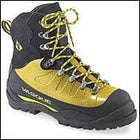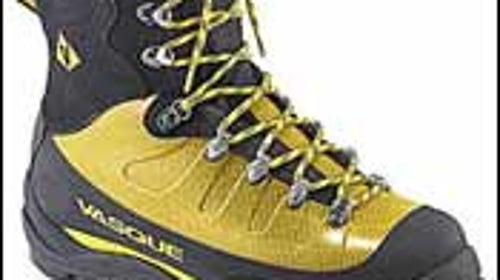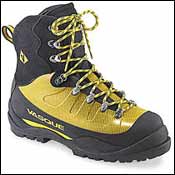No, not a tall order at all. Once upon a time we just went to REI, bought “climbing boots,” and did everything in themhiked, climbed Rainier, climbed rock (admittedly, not very well), and never thought about the notion we needed a different pair of boots for every activity.
 Super Alpinista
Super Alpinista
My own thought is that the Inverno ($300; www.scarpa-us.com), an excellent plastic boot, may be too much. Great for the cold/icy bits, less ideal for things like hiking on dry (if rugged) trails. The La Sportiva Nepal Extreme ($420; www.sportiva.com) has leather uppers (plus insulation) so it will have better “feel” on rock and will be more comfortable on the trail, although we’re not talking about day-hiker nimbleness. And my guess is they won’t be quite as warm as the Invernos. Full overboots or gaiters will help here, but I expect you’ve already laid in something such as the Outdoor Research Brooks Ranger Overboots ($135; www.orgear.com).
Two other boots might merit your attention. One is the Vasque Super Alpinista ($400; www.vasque.com), which like the La Sportiva boot has leather uppers, but it’s also designed for cold-weather use. The Scarpa Freney XT ($400) is also worth a lookit’s a new, futuristic-looking boot with partial leather uppers and PrimaLoft insulation, designed for mixed-alpine use in cold conditions.
You’ve got an ambitious climbing agenda. Stay saferemember, as Ed Viesturs says, getting to the top is optional. Getting back is not.
Read ���ϳԹ���‘s for the ten-step guide to getting up North America’s big hills, from Half Dome to Mount McKinley.


